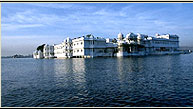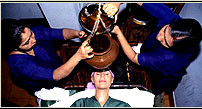-| Junnar Caves | -
Location: Lat 190º 10' N, Long 73º 53' E

These caves are situated about 80 kms. from Pune, 177 kms. on Mumbai –
Aurangabad route. The hills, surrounding the plains of Junnar, are honey-combed
with a cluster of Buddhist caves.
The longest concentration of the rock-cut caves is on four distinct hills in
various directions but with a radius of 5 kms. from the town of Junnar. There
are about 140 caves belonging to 1st Century BC to 3rd Century A.D.
The smallest group (1st century BC to 1st century AD) consists of a line of
eleven caves, known as Tulja – lena after the name of a deity Tulja –
Devi, who has been enshrined in cave no. 4. The cave no. 3 is the chaitya griha
(1st century BC) is singular of its kind and is characterised by a severe simplicity,
circular on plan and has twelve octagonal pillars arranged in a ring around
the central Stupa. Cave 7 is distinguished by its ornamental facade.
One of the caves group is known as bura – kotri (twelve celled) on account
of twelve cells distributed equally on three sides of an astylar benched hall.
The main group consists of about thirty caves. This cluster of caves is situated
about 5 kms. north - northeast of the town and is called Ganesh – lena
after the deity in cave 7.
There are large number of cells and viharas in small isolated groups and some
of them are incomplete. Some of the monasteries of the Junnar caves are small
and insignificant. Few caves are small monasteries, with one to three cells
preceded in some cases by veranda. They range in date from first century BC
to the 3rd century AD.
These Buddhist caves have variety of monasteries, viharas and chaityas and
provide a whole range of stages of development of Buddhist architecture in
the Western India.




